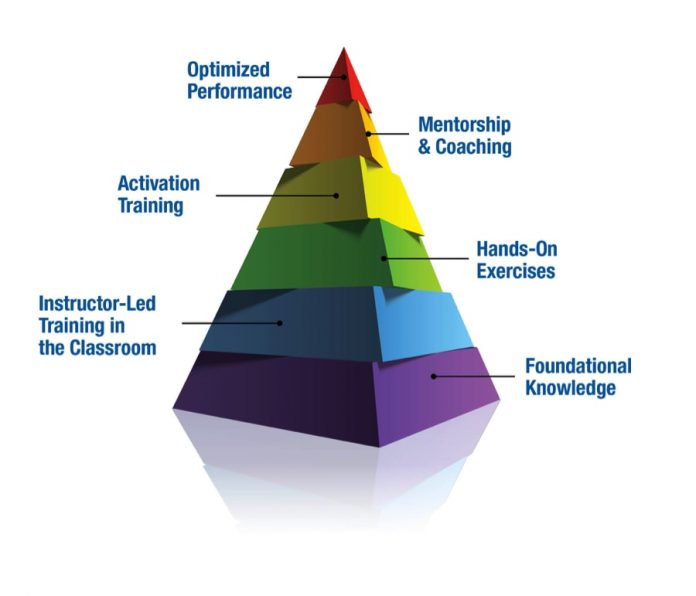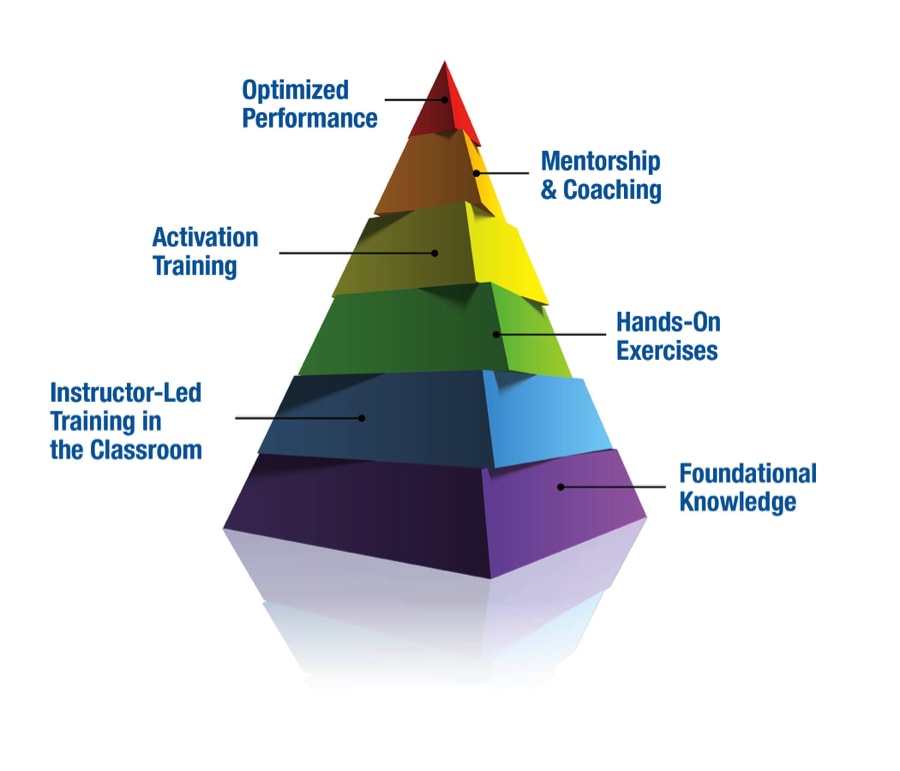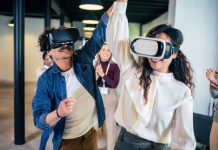
As a former CIO, and as someone who has been in information technology my whole career, I have come to appreciate the importance of having the right people, with the right skills and experience, in the right jobs. Particularly, when it comes to the development of systems or implementation of major programs, it is imperative to have a skilled and experienced leadership team. When I review programs, I always insist on meeting and being briefed by the program manager and his or her senior team—you can tell in an hour review whether the team has the requisite skills to handle the rigors of delivering successfully.
Yet many organizations struggle to find or even develop the skills of their staff. Typically, the answer is to provide training, and many organizations are turning to self-paced e-learning modules as the fastest, most cost-efficient answer. Yet, all too often, and eventually to a leader’s dismay, failures happen due to the lack of skills and experience with key staff. While e-learning can be valuable, it alone will rarely provide the requisite development of needed skills, particularly when individuals need to work in a team environment. To address this issue, organizations need to develop training and developmental approaches that optimize workforce performance through various means that synergistically support each other. Such an approach is the essence of what is called “blended learning.”
What Is Blended Learning?
According to the Office of Educational Technology at the U.S. Department of Education, blended learning melds traditional classroom-based learning with virtual and technology-based learning opportunities, giving students some control over the time, place, path, or pace of learning (http://tech.ed.gov/files/2015/12/NETP16.pdf). The result is an adaptive, personalized learning experience that facilitates maximum understanding of knowledge, and the ability to apply that knowledge to real-world problems.

- Foundational Knowledge: Essential knowledge and skills can be easily delivered through books, e-learning, Webinars, videos, Websites, blogs, white papers, solution briefs, etc.
- Instructor-Led Training in the Classroom: Second-tier learning of complex concepts is best delivered in an interactive in-person or virtual classroom environment. Expert instructors provide in-depth training of advanced topics and foster learning through discussion and participation among class members.
- Hands-On Exercises: Students are encouraged to practice new skills and knowledge in the classroom and via an online sandbox environment, where they’re free to practice and experiment with their new skills when and where they choose, and at their own pace.
- Activation Training: With expert guidance and hands-on assistance, students apply their newly gained skills to their current work to receive actual project artifacts for their specific program in a “safe” environment such as a Project Acceleration and Implementation Workshop.
- Mentorship and Coaching: Learning doesn’t stop when formal training is over. Students should leverage resources, such as subject matter experts and advisors, in order to find the best way to apply new skills and knowledge on the job.
- Optimized Performance: Students apply their newly honed skills and knowledge daily on the job, maximizing performance in their organizations and contributing to an optimized workforce.
The Defining Aspects of Blended Learning
- Learning must include an element of instructor-led learning, either in a brick-and-mortar or a virtual interactive classroom environment.
- Technology is introduced to the learning environment in a way that gives students some control of time, place, path, and/or pace of learning.
The Advantages of Blended Learning
- The learner is in the driver’s seat. When students are given control of some aspects of training, they are free to choose what best suits their needs, which makes for a more effective learning environment.
- Different learning approaches address different needs. Because blended learning combines varied delivery methods, students are free to learn the way that works for them.
- Learning is focused on high-order “doing” skills (creating, evaluating, analyzing, and applying) over low-order “thinking” skills (understanding and remembering). Hands-on learning, facilitated through technology, ensures learners can apply their new knowledge to their specific environment.
Transforming Your Training Culture With Blended Learning
Because blended learning combines training from expert instructors with hands-on experience, this learning method is a must for adult professionals looking to learn and apply new skills back at the office. It is an effective way to maximize learning so that new knowledge and skills can easily be applied to real-world problems on the job. For companies that implement this training method in their organization, this translates into:
- Engaged team members who are ready to apply new skills on the job.
- Heightened institutional knowledge that can be shared throughout the workforce.
- Increased ROI on each training dollar spent.
- Confident employees who are invested in the company’s goals—because the company made the effort to invest in their careers and personal growth.
A Case Study
Recently, a major health-care provider turned to my organization to support it in developing a blended learning approach for its software development teams. New team members were directed to use e-learning modules to develop skills on programming languages, yet these team members struggled with applying these skills in a real-world development environment.
By augmenting their learning with instructor-led, exercise-based training, together with the offer of after-training instructor coaching, new developers are able to rapidly learn and be productive for this health-care provider. A small additional investment in the individual is paying significant dividends to the firm in both increased productivity and employee morale.
Here is some of the feedback we received:
“Thank you for giving us this training. The instructor was great and made it easy to apply our new skills.”
“It was great gaining practical experience on how to use what we’ve learned directly in our work.”
“The hands-on exercises were very effective. I liked how some exercises were completed as an individual and some in groups.”
“The material is great. I learned a lot of new terms and processes.”
In almost all learning, the ability to interact and problem solve with a subject matter expert can be invaluable—there is no substitute for that one-on-one interaction to help transfer knowledge and experience.
4 Effective Tactics to Maximize Your Return on Training
- Request value-add from your training partner to help the knowledge and skills transfer beyond one course or event, such as coaching or an acceleration workshop.
- Secure stakeholder commitment if process or culture change is required to make the training stick.
- Centralize purchasing efforts between departments or agencies for better cost-efficient solutions.
- Consider combining internal and external efforts to maximize performance using blended learning solutions.
Richard A. Spires is currently CEO at Learning Tree International, and former CIO at the U.S. Department of Homeland Security and the Internal Revenue Service.
Connect with him: @raspires or via LinkedIn




